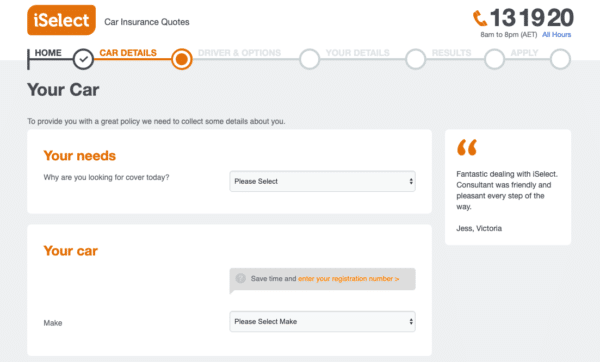The Art and Science of Interactive Communication (And How You Can Use It to Connect With More Customers)

This content discusses the importance of interactive communication in engaging with customers and provides examples of interactive experiences.
We are fighting a war of attention...An alarming 75% of blog posts get fewer than 10 social media shares, despite more than two million blog posts being published every day.“Turning up” is not enough anymore.Publishing a few blogs, tweeting a few memes, and sending a few emails won’t hit a chord with your customers like it used to.But it’s not about doing more, either.For many digital marketers who have seen success with the above-mentioned tactics, they sit stubbornly with a belief that; “If I just do more, it will work.”The reality is something quite different…Your customers behave, interact, and connect in different ways than they did last year. In fact, their attention is a moving target - a tactic that works today may not work tomorrow.
Your customers behave, interact, and connect in different ways than they did last year."
That’s why we need to stop thinking about consumer engagement and online connectivity as a set of ‘tactics’ - because tactics grow tired.Instead, we need to create a repeatable framework of engaging with customers that mirrors the way they behave. A framework that adapts and changes with the trends of our customer’s lifestyle. A framework that combines traditional consumer psychology, with modern preferences, and technological advancement.Enter interactive communication.
What is interactive communication?
Interactive communication leverages technology to engage and connect with people on a one-to-one level. It personalizes the online experience for consumers by responding, in real-time, to a user’s actions without human intervention. Effective interactive communication utilizes predetermined triggers; such as user choice, cursor movement, personal data, or other available information to create a unique and compelling brand interaction.
The purpose of this form of communication is to heighten the brand experience for more people without needing additional human resources.
And, because interactive communication can be largely predetermined, the experience across all customers becomes far more consistent.At one point, interactive experiences were rigid and it was painstakingly obvious that, as a user, you were interacting with a robot. Thanks to advances in machine learning and artificial intelligence, interactive communication is now a fluid process which adapts quicker than most customer service agents could, and is armed with far more valuable data about the person you are engaging with.Let’s take a look at how interactive communication plays out in reality.
Start with technology (the science)
Without the aid of technology, large-scale interactive communication is impossible.You need to harness the right technology to capture user data, process that data, and then use the insights from that data to initiate actions.So, what are some forms of technology that can do all of these things and create an interactive experience for your customers?Common examples of interactive communication powered by technology include chatbots, interactive videos, quizzes, contests, forms, calculators, and interactive graphics.A simple representation of interactive communication in action is the Facebook Messenger bot that prompts a conversation when you visit certain business pages. Based on your response to a pre-set question, the bot replies with an answer and then prompts a follow-up question.

Facebook Messenger bot example.Another great example of interactive communication is the use of step-by-step forms which guide users through a simple process and capture data at each point along the way. The comparison website, iSelect, use this concept to lead visitors in the right direction with a series of targeted choices: Step 1

Interactive form example, part one. Step 2

Interactive form example, part two.As you progress through the steps in this interactive process, the questions become more detailed and targeted:

Interactive form example, part three.Multi-step contests are another way you can engage interactively with your prospects. Like this contest from Holiday Parks New Zealand which requires contestants to answer a series of highly targeted quiz questions to enter:

Interactive communication using quiz questions.View and Create Your OwnAll of these examples of interactive communication keep users engaged with micro-interactions where the user only needs to take a small, fast, and seemingly non-committal action to progress in the journey.
Inject a bit of humanity (the art)
For interactive communication to be effective, you need more than just technology.Even though users are interacting with pre-determined triggers which allow them to choose their own journey - the experience needs to feel as if they are interacting with a human.Your ability to add a “human touch” to your interactive experience will increase the engagement levels and help you better connect with your customers at scale.So, how do you add a human touch without physically involving yourself and your team in the process?It’s all about getting creative with how the experience is delivered. With any interactive experience, there are multiple opportunities to inject a bit of personality, personalization, and human connectivity.An excellent example of this can be seen in the email below from GasBuddy. This email is a follow-up to an interactive experience which has personalized numerous elements based on the individual's data:

Email personalization example as interactive follow up.For another example, you may like to draw inspiration from Taco Bell. The email below gamifies the experience for users with an interactive board game.

Gamified interactive email example.What makes it human is the personable language they use to connect with the reader below the game. “We saved a seat for you” and “you make our spirits bright” are two examples of how they are talking directly to the email recipient, humanizing the experience, and breaking down the brand-to-customer barrier.

Emotive language to personalize an interactive experience.When creating an interactive experience to communicate with your customers, it’s important that you don’t get caught up in the bright lights of fancy technology. Remember that technology is only powerful in aiding communication and engagement if it elevates the brand-to-consumer connection. In the end, humans want to interact with other humans, so we need to replicate that experience as best we can with interactive elements.
Conclusion
The concept of interactive communication is still a fairly new trend. While forms, contests, and quizzes have been around for decades, the ability of technology to deliver these experiences in a way that increases user engagement, even more than human interaction, is being greatly underutilized.As a brand that operates in the digital space, you have an opportunity to create a competitive edge based solely on the way you attract and interact with customers at scale. Yes, you need technology to make this happen. But without the human touch, your interactive experiences will create nothing more than a sense of disconnectedness.If the experience you create is clunky, robotic, and uninspiring, your customers will run in the opposite direction. Yet, if you are able to create an experience which is exciting, automated, and highly personalized, you will open up a new world of opportunities.
Try a ShortStack template to create your first contest fast and easily.
Get Started Today. No credit card required. Risk-free.




